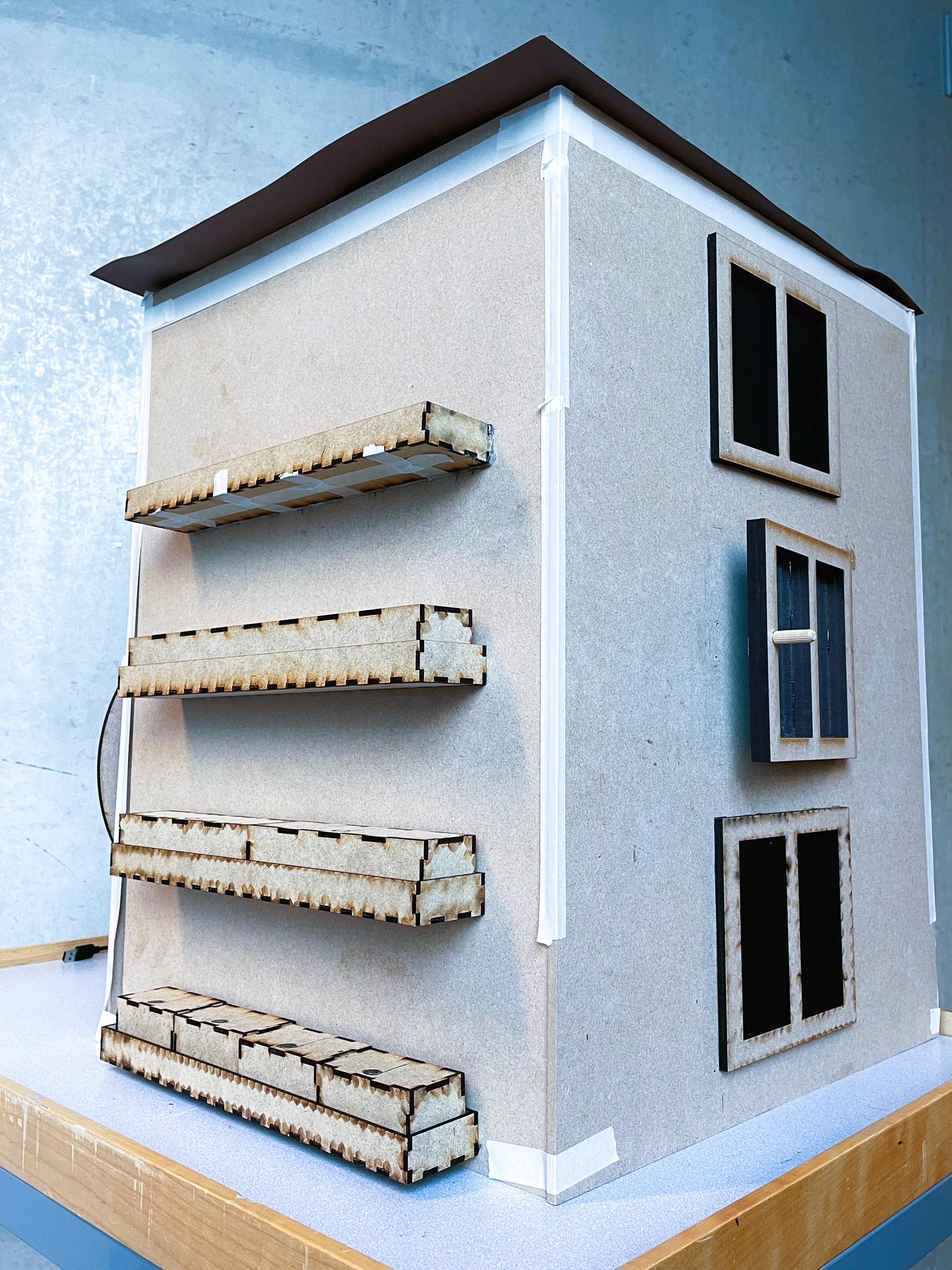
Sound House
Timeline: 5 weeks
Course project
Team
Interaction design ∘ Prototyping ∘ Arduino
Project overview
Sound House was developed for the Tangible and Embodied Interaction course. Our brief was to create a tangible music artifact for educational technology. We designed Sound House for children aged 6-10, allowing them to tangibly explore musical concepts within a museum or exhibition setting.
Research question
How might tangible artifacts, through metaphors, increase the understanding of abstract concepts in music such as volume, pitch, octave, and rhythm?
Findings
The approach of using visual metaphors and allowing tangible user interaction proved successful for presenting musical concepts in a playful way.
Design process
Research and exploration
We began with a literature review to explore previous work in the field. Based on this research, we decided to use metaphors to simplify the understanding of abstract musical concepts like volume, pitch, octave, and rhythm.
To better understand embodied interactions, we dedicated a week to daily explorations involving bodystorming, brainstorming, and low-fidelity prototyping.

Framing concept
Building on the prototyped interactions and music theory, we brainstormed suitable metaphors for each musical aspect. This process led to the Sound House concept: an apartment building where each side is dedicated to exploring a specific musical concept.

A. Octave – The elevator
The apartment building consists of 4 floors. Each floor represents a different octave. The elevator goes between the different floors and controls which octave is being played. The elevator can be operated by rotating the big valve placed next to the elevator.
B. Pitch – The stairs
The pitch is controlled by walking the shoe up and down the flight of stairs. Each step on the stair represents a note in the C major scale. The shoe can jump between different steps and does not need to go in any specific order.
C. Volume – The window
The volume that is output by the device is dynamically controlled by opening and closing the window where closed means minimum volume and open means full volume. The main metaphor here is that the user is “letting the music out” through the window.
D. Rhythm – The balconies
By placing tone blocks in the balconies on the side of the building, the rhythm of the playback can be changed. The metaphor of the balcony represents a musical measure of 4/4-time where the tone blocks are whole notes, half notes, and quarter notes, respectively. The blocks can be placed in any combination as long as they fit and they even allow for pauses, where pauses are the lack of a tone block in a spot. If no blocks are placed in the balcony, the device will not make a sound as the musical measure is empty. For simplicity’s sake, the measure is limited to a division of four beats where quarter notes are the smallest denominator.
User testing
The target user group was children aged 6-10. However, due to the pandemic and project pace, access to these participants was limited. For the initial user testing, we used surrogate participants: Malmö University students aged 20-30. During the user testing, participants were instructed to think aloud while interacting with the Sound House, followed by follow-up questions.
Insights from user testing
- Interaction with the Sound House was perceived as fun and tangible.
- The separation of musical aspects into individual sides was appreciated, allowing for independent exploration.
- Individuals with limited musical backgrounds could easily manipulate the musical aspects and were able to articulate the changes they made in their own words.
- The tangible interactions effectively served as metaphors for musical concepts.
- Using visual metaphors and tangible interaction was an effective way to present musical concepts.
- Engagement with the Sound House led to an improved understanding of music for several participants.
- Several participants felt that the Sound House improved their understanding of the music concepts
Personal learnings
This project deepened my understanding of how tangible interactions enhance experiences. It also strengthened my programming and mechatronic skills. Furthermore, I gained experience in conducting user testing despite limited access to the target user group.